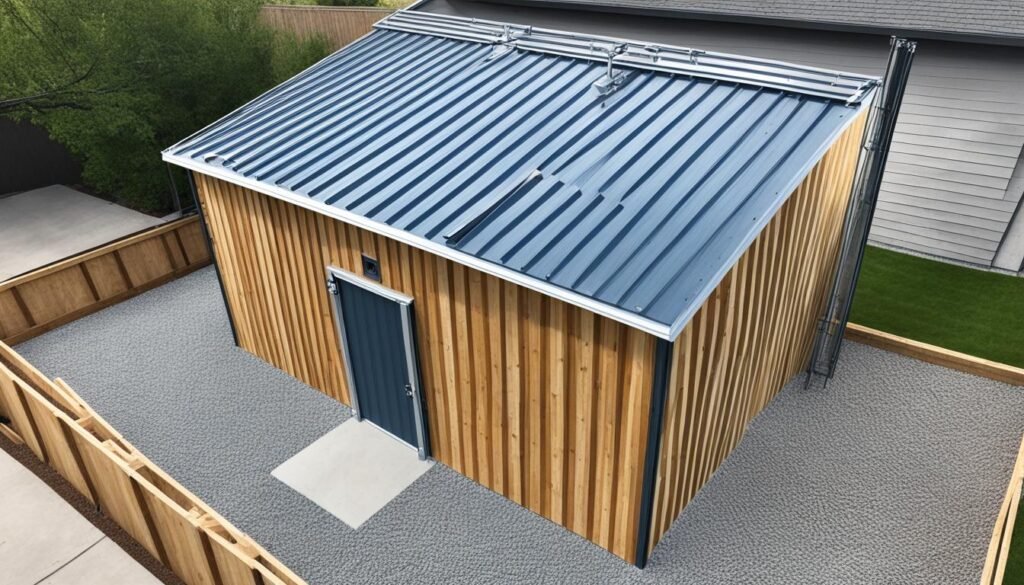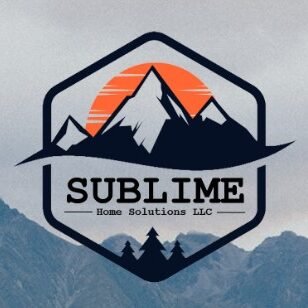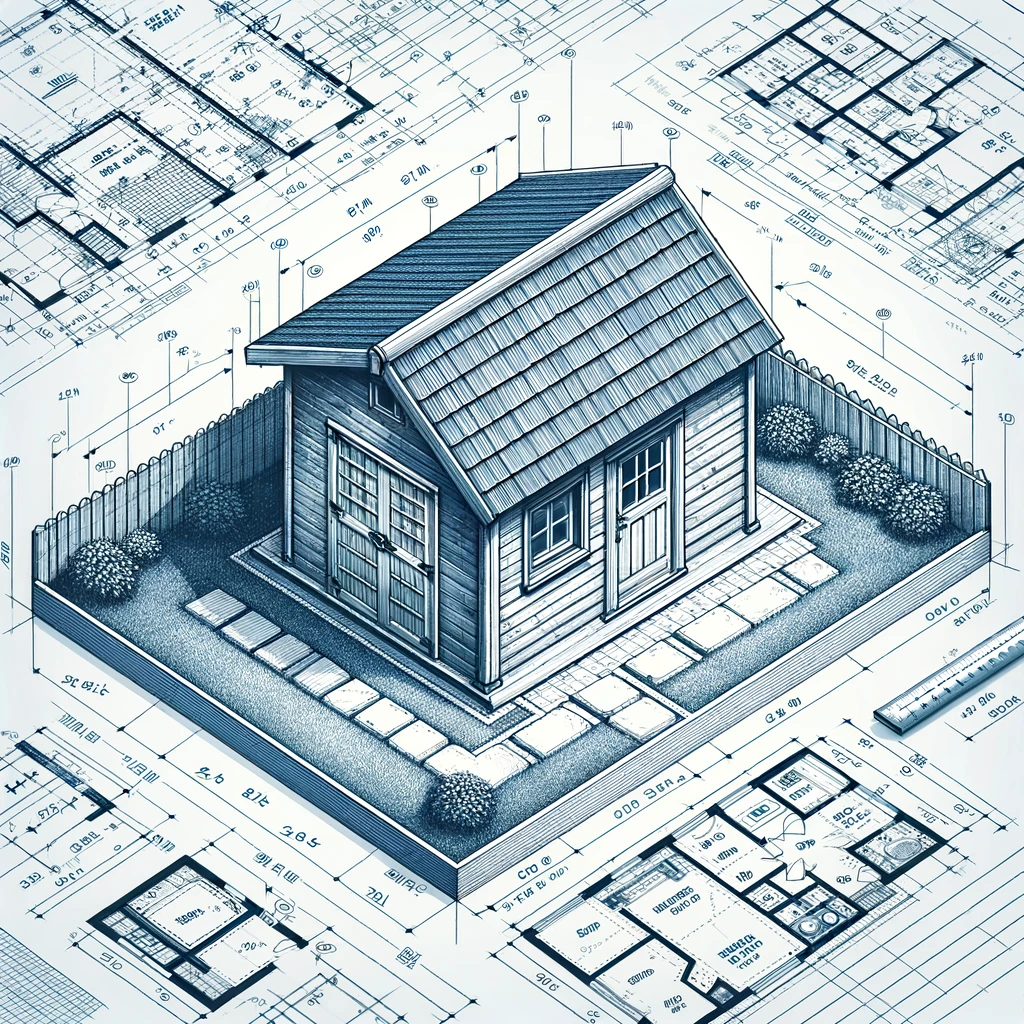While nearly 15 million sheds adorn backyards across the United States, the benefits of a well-constructed outbuilding extend far beyond sheer numbers. Embarking on a DIY shed project not only elevates your backyard storage capabilities but also beckons the opportunity to craft a personalized outdoor retreat. From savvy shed design ideas to practical shed plans, your shed construction journey holds endless possibilities for transforming your slice of the great outdoors into a functional and aesthetic oasis. And while you navigate the roadmap of how to build a shed, consider the multitude of shed building materials and custom sheds that cater to your unique vision—all within a mindful shed construction cost.
Whether you’re a novice in the realm of outdoor building projects or a seasoned DIY shed builder keen on refreshing your backyard storage strategy, these insights will be your compass. We’ll guide you through selecting shed plans that harmonize with your architecture, tailoring your shed design ideas to fit the topography of your land, and crafting a space that’s as robust as it is stylish. Let’s hammer down the essentials to ensure your toolbox is brimming with knowledge for your upcoming backyard construction conquest.
Key Takeaways
- Mastering shed construction enhances both functionality and beauty in your backyard space.
- Selecting the right shed plans and design ideas can make or break your DIY shed project.
- Knowledge of shed building materials contributes to a durable and long-lasting structure.
- Customization is key to incorporating personal touches that make your shed uniquely yours.
- Understanding shed construction costs upfront facilitates informed budgeting decisions.
Understanding Local Regulations and Property Lines for Shed Construction
Embarking on a shed construction project requires more than just tools and materials; it’s crucial to first navigate the legal landscape surrounding your build. Awareness of local shed construction regulations and obtaining necessary shed permits can save you from potential headaches with law enforcement and disgruntled neighbors. It’s equally important to respect property line regulations to ensure that your new structure is appropriately sited.
Checking Regulations Before You Start
Before you put hammer to nail, you should contact your local building department to confirm whether your project needs to be formally authorized. Knowing the shed permits required in your region is a must, as each municipality has different rules regarding shed size, height, and construction. Don’t overlook this step, since permission isn’t just a formality; it’s a legal requirement that safeguards you and your property.
Ensuring Compliance with Neighborhood Covenants
Even after you have the green light from city officials, it’s wise to understand any neighborhood covenants that may be in place. These agreements often outline additional shed placement rules, including acceptable distances from property lines or specific aesthetic considerations to maintain the character of the area. Staying informed and compliant with these guidelines not only prevents disputes with neighbors but also ensures that your shed adds value in harmony with its surroundings.
Preventive Measures to Avoid Flooding and Erosion
When it comes to safeguarding your outdoor buildings, smart positioning and landscape engineering are critical. Discover how strategic placement and drainage strategies play vital roles in maintaining the condition and integrity of your property.
Choosing High Ground for Your Shed
Selecting the right location is the first step in shed flooding prevention. By situating your shed on high ground placement, you significantly reduce the exposure to water run-off, thereby minimizing the risk of both flooding and erosion. Assess your property and opt for elevated areas that naturally discourage water accumulation.
Implementing Proper Drainage Solutions
Beyond location, proper drainage systems are essential for maintaining a dry and stable shed environment. Let’s delve into various techniques that can safeguard your shed’s foundation from water damage.
- Installation of gutters and downspouts to channel water away from the structure.
- Construction of a sloped shed foundation to direct water runoff effectively.
- Use of landscaping features such as French drains or swales to manage excess water.
Incorporating these strategies not only prevents shed erosion prevention but also prolongs the life of your structure.
| Preventive Strategy | Purpose | Benefits |
|---|---|---|
| High Ground Placement | Avoid water pooling | Minimizes risk of flooding and foundation damage |
| Gutters and Downspouts | Redirect roof water runoff | Protects base of the shed, reduces splashback and soil erosion |
| Sloped Foundation | Encourage water to flow away from shed | Prevents water intrusion and structural complications |
| Landscaping Features | Manage and disperse excess water | Enhances garden aesthetics while providing practical drainage solutions |
The steps mentioned above will help ensure that your outdoor structure stands firm against the elements. Remember, the longevity of your shed depends on a combination of thoughtful placement and the implementation of robust flooding and erosion controls.
Creating a Solid Foundation: Leveling the Ground
Before diving into the construction of your backyard structure, it’s essential to start with the basics: a sturdy shed foundation. This fundamental step is crucial for ensuring the stability and longevity of your shed. First, the importance of leveling the ground cannot be overstated. It’s the bedrock that prevents future structural issues, and ensures that your shed base is evenly supported.
A gravel foundation stands out as a viable option for most sheds due to its remarkable draining properties and stability. Incorporating a meticulously prepared gravel foundation into your shed base can guard against moisture-related complications, ensuring a durable and lasting edifice.
Here’s a guide to help you ensure that your shed base is as level and sturdy as possible:
- Clear the Space: Remove all organic material, such as grass, weeds, and roots. These can decompose and cause settling.
- Excavate if Necessary: For sloped land, you may need to cut into the slope and level off an area for your shed foundation.
- Use the Right Tools: Employ a landscape rake and tamper for even leveling and solid packing of the soil.
- Choose the Correct Gravel: Small, crushed stones are best for a compact and level gravel foundation.
- Measure Correctly: It’s crucial to maintain a level base, check frequently with a long level or a straight plank with a level on top.
| Step | Materials Needed | Tools Required |
|---|---|---|
| 1. Site Prep | Landscape fabric, gravel | Spade, rakes |
| 2. Leveling Ground | Tamping material (sand or gravel) | Landscape rake, tamper, level |
| 3. Adding Gravel | Crushed stone gravel | Wheelbarrow, shovel, rake |
Remember, taking the time to level the ground meticulously will eliminate the need for costly corrections down the road. Always measure twice and level once to set the stage for a flawless shed foundation.
Benefits of Using Landscaping Fabric for Weed and Pest Control
When it comes to optimizing your outdoor space, shed maintenance involves more than just repairs and a fresh coat of paint. An essential but often overlooked aspect is the ground beneath it. That’s where landscaping fabric plays a pivotal role. This sturdy material, strategically placed under your shed, provides unparalleled weed control. Weeds are more than just an eyesore; they can undermine the foundation of your outdoor structures by causing erosion. Moreover, their unchecked growth can create hidden pockets and paths for unwanted pests.
Luckily, say goodbye to back-breaking weeding. Landscaping fabric acts as a blockade against the emergence of weeds while still allowing water to drain through, preventing waterlogging. Aside from keeping the area neat, this fabric is integral for pest control. It discourages critters such as voles, gophers, and insects from setting up residence under your shed, ensuring the long-term integrity of its structure.
- Effective weed control that maintains the aesthetics of landscaping
- Enhanced pest control minimizing the risk of structural damage
- Improved shed maintenance, lessening the frequency of repairs
- Valuable landscaping tips for sustainable garden practices
As you consider these landscaping tips, imagine the ease of mind that comes with a well-maintained shed environment. With the right preparation and materials—such as installing an effective landscaping fabric—you ensure a tidy, lush garden free of unwelcome intruders, both floral and faunal. Now that’s a landscape designed for peace of mind and practicality.
Designing For Accessibility: Allowing Enough Space Around the Shed
When you embark on the journey of shed design, understanding the significance of shed accessibility is paramount. The ultimate goal is to create a versatile and functional outdoor structure without sacrificing aesthetic appeal or space utility. Keeping the focus on space around the shed will not only facilitate better access but will also enhance your outdoor organization efforts. Therefore, it is critical to allocate sufficient clearance on all sides of your shed, which will pay dividends in the form of efficient maintenance and usability.
Maintaining adequate space around shed areas contributes to various practical aspects. Firstly, it ensures that water runoff is managed effectively, reducing the risk of water-related damages. Adequate space also allows for easier repairs and renovations, should they become necessary over time. Besides, having enough room to maneuver means that your storage space can be maximized, allowing you to store and retrieve items with ease.
To truly grasp the impact of spatial design, consider the following key benefits:
- Improved air circulation, reducing the potential for dampness and mold growth.
- Better navigation for large items such as lawn mowers and garden tools.
- Enhanced functionality, with the possibility of adding shelving or hooks on the exterior sidewalls for extra storage.
While designing your shed design, keep in mind that your future needs might evolve. Perhaps you’ll require more storage space or decide to repurpose the shed entirely. Planning with foresight will assure that the outdoor organization remains a core feature of your backyard oasis for years to come.
Remember, when it comes to shed accessibility, more is better. Allow yourself the convenience of space, and enjoy the full potential of your outdoor structure with thoughtful and intentional design.
Constructing a Durable Perimeter for Shed Stability
When looking to enhance shed stability, one must not overlook the importance of crafting a strong shed perimeter. This element serves as the bulwark against the forces that threaten the foundation stability of your outdoor structure. By incorporating robust shed construction techniques and prioritizing structural integrity, you can establish a perimeter that endures through the seasons.

Begin by selecting high-quality, pressure-treated lumber that is designed for ground contact. This kind of wood is treated to fend off decay, pests, and moisture, ensuring that the foundational elements of your shed remain uncompromised. The stability of your shed’s foundation relies profoundly on the strength and durability of the protective perimeter you install.
To construct a shed perimeter that provides solid foundation stability, take precise measurements to ensure that all sides are even and form a true square or rectangle, depending on your shed’s design. Sinking your perimeter support deep into the ground is also essential for maintaining a formidable bearing. Here, a balance must be struck between depth and practicality to avoid any potential complications with frost heave in colder climates.
If you find that your shed’s site is not level, the perimeter can serve a dual function as a retaining wall to combat this issue. Adequately anchoring your perimeter into the ground will be paramount in these cases. Not only does this fortify the foundation, but it also preserves the shed construction from potential shifting that can occur with soil movement over time.
- Anchoring braces and support beams horizontally can bolster the structure further.
- Applying a coating of wood preservative to the base can extend the lifespan of the wood, especially in contact with the soil.
- Regular inspection for conditions that might threaten the foundation stability is recommended to mitigate any potential issues post-construction.
In conclusion, by implementing these preventive and proactive strategies, you ensure a stable and enduring habitat for whatever you choose to house within your shed. With solid shed construction techniques, you create a foundation that not only stands firm against the whims of nature but also extends the life and utility of the shed itself.
Weatherproofing and Pest Control for Long-lasting Shed Quality
To ensure your outdoor structures withstand the test of time, shed weatherproofing and pest control should be at the top of your maintenance list. With the right shed materials and consistent shed maintenance, you can safeguard your investment from the elements and unwanted invaders. Below are some expert tips to help you protect your shed.
Choosing the Right Materials for Insulation
When selecting shed insulation materials, it’s crucial to choose options that not only retain warmth during colder months but also resist moisture and fend off heat during the summer. Insulation materials such as fiberglass or foam boards are popular choices, as they offer a balance of thermal protection and are relatively easy to install. You’ll want to consider the R-value — a measure of insulation’s ability to resist heat — when making your selection to ensure maximum energy efficiency for your shed.
Sealing Techniques to Prevent Pest Intrusion
Effective pest control starts with thwarting entry points. To keep those pesky intruders out, inspect your shed for any cracks, holes, or gaps. Sealing these with caulk or weather-stripping can significantly reduce the likelihood of pests gaining access. For larger openings, consider metal screens or vent covers as they offer a sturdy barrier against rodents and larger critters.
| Material | Benefits | Best Use |
|---|---|---|
| Fiberglass Insulation | Cost-effective, easy to install, good thermal resistance | Walls and Ceilings |
| Foam Board Insulation | High R-value per inch, moisture resistance | Floors and Roofs |
| Metal Screens | Durable, rodent-proof, allows for ventilation | Vents and Larger Openings |
| Weather-stripping | Air sealing, inexpensive, easy to apply | Doors and Windows |
Remember, regular checks and timely maintenance are essential in extending your shed’s lifespan. By combining solid shed insulation, effective sealing, and appropriate shed materials, you’re set to enjoy a pristine and functional shed for many years to come.
Maximize Your Shed’s Potential with Customization
Transform your shed into a one-of-a-kind feature in your backyard through shed customization. Going beyond mere storage, your shed can reflect your personal style and cater to your unique lifestyle needs. With a variety of custom shed options, your outdoor structure can evolve from a traditional utility space to an extension of your home that’s both practical and aesthetically pleasing.
Incorporating Personal Design Elements
Infuse character into your shed by integrating shed design ideas that echo your personality. The addition of windows not only enhances the curb appeal but also ushers in natural light, creating a more welcoming space. Delve into the world of personalization by selecting unique color palettes, distinctive door styles, and custom hardware. Establish a system of organization with shelving units, while integrating workbenches can offer a functional workstation for hobbies or home projects.
Custom Sheds to Fit Your Unique Needs
Whether you envision a quiet garden retreat or a bustling home office, unique shed features can be tailored to suit any purpose. Start by considering the interior layout to ensure it serves your intended use effectively. Here’s a quick guide to help visualize how shed customization can be applied for different functions:
| Function | Custom Feature | Benefits |
|---|---|---|
| Garden Retreat | Skylights and French doors | Natural lighting and picturesque views |
| Home Office | Insulated walls and electricity | Year-round comfort and connectivity |
| Workshop | Built-in workbenches and tool storage | Efficient space utilization and organization |
| Entertainment Area | Bar counter and audiovisual setup | Perfect for hosting gatherings |
| Fitness Studio | Mirrored walls and resilient flooring | Durable and suitable for workout routines |
While exploring the realm of personalization, remember that your shed’s customization should be as practical as it is personal, ensuring that the space is not only reflective of your style but also maximizes functionality.
Figuring Out the Cost: Budgeting for Your Shed Construction
When embarking on the journey of constructing a shed, understanding the shed construction cost is a pivotal first step. Not only will you need to account for the materials cost, but also the labor cost, whether you enlist professional help or decide to go the DIY shed budget route. To help you navigate the financial aspect of shed building, let’s break down what to consider when budgeting for shed construction.

Starting with materials, the variety of shed designs and the choice of high-quality, durable materials will play a major role in the total expense. Wood, metal, or vinyl – each comes with different pricing and longevity. Your decision on materials will influence not only the up-front cost but the maintenance expenses over time. Next, consider the labor – if you’re not constructing the shed yourself, the cost of skilled craftsmen can be significant. Even if you plan on a DIY shed budget, some tasks may require professional expertise, which should be included in your budgetary plans.
| Expense Category | Estimated Cost Range | Notes |
|---|---|---|
| Materials | $200 – $5,000 | Varies based on size and quality of materials chosen |
| Labor | $0 – $3,000 | DIY to professional help; the complexity of design affects costs |
| Permits | $50 – $400 | Dependent on local regulations |
| Tools and Equipment | $50 – $600 | Includes saws, hammers, drills, etc., if not already owned |
| Additional Features | $0 – $2,000 | Customization such as windows, shelving, or exterior finishes |
Do remember, the aforementioned table offers estimated ranges that can adjust based on your specific circumstances and market fluctuations. Before diving into your shed project, take the time to conduct detailed research on current materials cost, and if possible, secure quotes directly from suppliers and contractors. Planning thoroughly in this manner will bring you closer to ensuring a shed that not only meets your needs but fits your budget as well.
DIY Shed Kits vs. Building from Scratch
When embarking on the journey of shed construction, you have two distinct paths you could follow: opting for shed kits or embracing the challenge of building from scratch. Each approach to shed construction methods will invariably affect the shed assembly time and your overall experience.
Pros and Cons of Using a Shed Kit
Shed kits come as a boon for the DIY shed enthusiast looking for convenience and quick assembly. They usually include all the necessary components precut, thus simplifying the process. However, the drawback to shed kits is a lack of customization. They provide a template that you can work on but within limits. Below is a detailed list of the benefits and limitations.
- Pros: Speed of assembly, convenience, and reduced preparation time.
- Cons: Limited customization and potential compromise on unique design elements.
Time Commitment for Shed Kit Assembly
As for the shed assembly time, kits are designed to be user-friendly and time-efficient, offering a significant advantage over building from scratch. To provide clear insights, here’s a comparative table detailing the average time investment between shed kits and traditional shed construction.
| Construction Method | Estimated Assembly Time |
|---|---|
| DIY Shed Kit | 1-3 days |
| Building from Scratch | 1 week to several weeks |
If you’re leaning towards a custom approach, consider that building from scratch can be rewarding but demands a significant investment of your time and potentially more complex skills. Reflect on what you’re aiming to achieve with your shed, the level of personal input you desire, and how hands-on you wish to be within your constructions undertakings.
Key Components Included in a Shed Kit
When you invest in a shed kit, you’re buying more than just storage space; you’re purchasing convenience and efficiency. A standard shed kit comes complete with a variety of shed kit components designed to streamline the shed assembly process. Gone are the days of measuring and cutting lumber, thanks to pre-cut materials that fit together with ease, simplifying your construction experience.
From the foundational elements to the finishing touches, a shed kit provides all the shed building supplies necessary to erect a sturdy and attractive structure in your backyard. Let’s break down the typical components you can expect to find when you unbox your shed kit:
| Component | Description | Purpose |
|---|---|---|
| Pre-cut Lumber | Wood pieces cut to precise lengths. | Framework for walls, roof, and floor. |
| Pre-drilled Metal Sheeting | Sheet metal with pre-drilled holes for easy installation. | Durable roofing to protect against the elements. |
| Hardware | Nails, screws, bolts, and hinges. | For secure assembly of all components. |
| Rafter or Roof Trusses | Triangular framework for the roof structure. | Provides stability and support to the roof. |
| Wood Gussets | Small, flat pieces of wood for reinforcement. | For reinforcing joins between trusses. |
| Wall Studs | Vertical framing members. | Structural foundation for the walls. |
| Trim Pieces | Decorative woodwork for edges and corners. | Finishing touches that enhance the shed’s aesthetics. |
If you’re contemplating a shed for your outdoor space, remember that a kit can dramatically reduce your workload. Assembly is typically a straightforward process, with a straightforward set of instructions to guide you. Nonetheless, don’t shy away from seeking a helping hand or professional advice when necessary. The journey from components to completion is part of the reward—revealing not just a structure, but a self-built addition to your home.
Conclusion
Embarking on the journey of shed construction is not only a practical addition to your backyard but also an opportunity to enhance the overall appeal of your outdoor space. This comprehensive guide has offered a robust summary of shed construction tips to help you realize your vision of a perfect backyard retreat or workshop. You’ve learned the importance of adhering to local regulations, ensuring your shed has a solid foundation, and integrating measures to protect against the harsh elements of nature.
Moreover, the final tips for shed construction encompass essential considerations such as utilizing landscaping fabric for weed and pest control, designing your shed for easy access and maintenance, and fortifying your build with a robust perimeter. These factors play a pivotal role in crafting a resilient structure that stands the test of time. Remember, whether you opt for a minimalist design or a successful shed building project teeming with customization, the key lies in meticulous planning and execution.
As your project draws to a conclusion, review the strategies explored herein to ensure every step is covered—from successful shed building practices to selecting the right materials and construction methods that align with your budget and preferences. By balancing practicality with personalized flair, the shed you construct will not only fulfill your storage needs but also become a treasured aspect of your home’s outdoor space.


